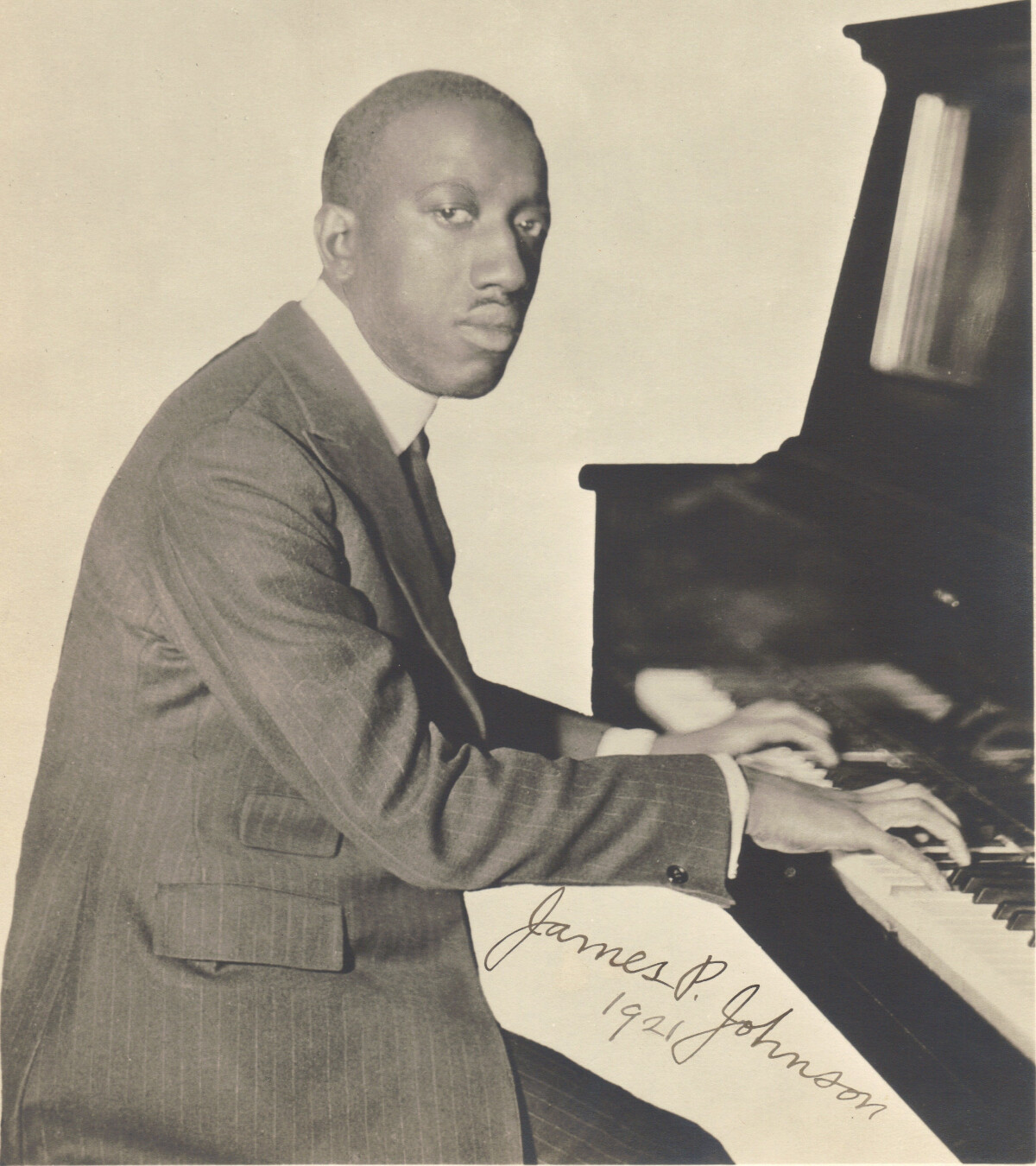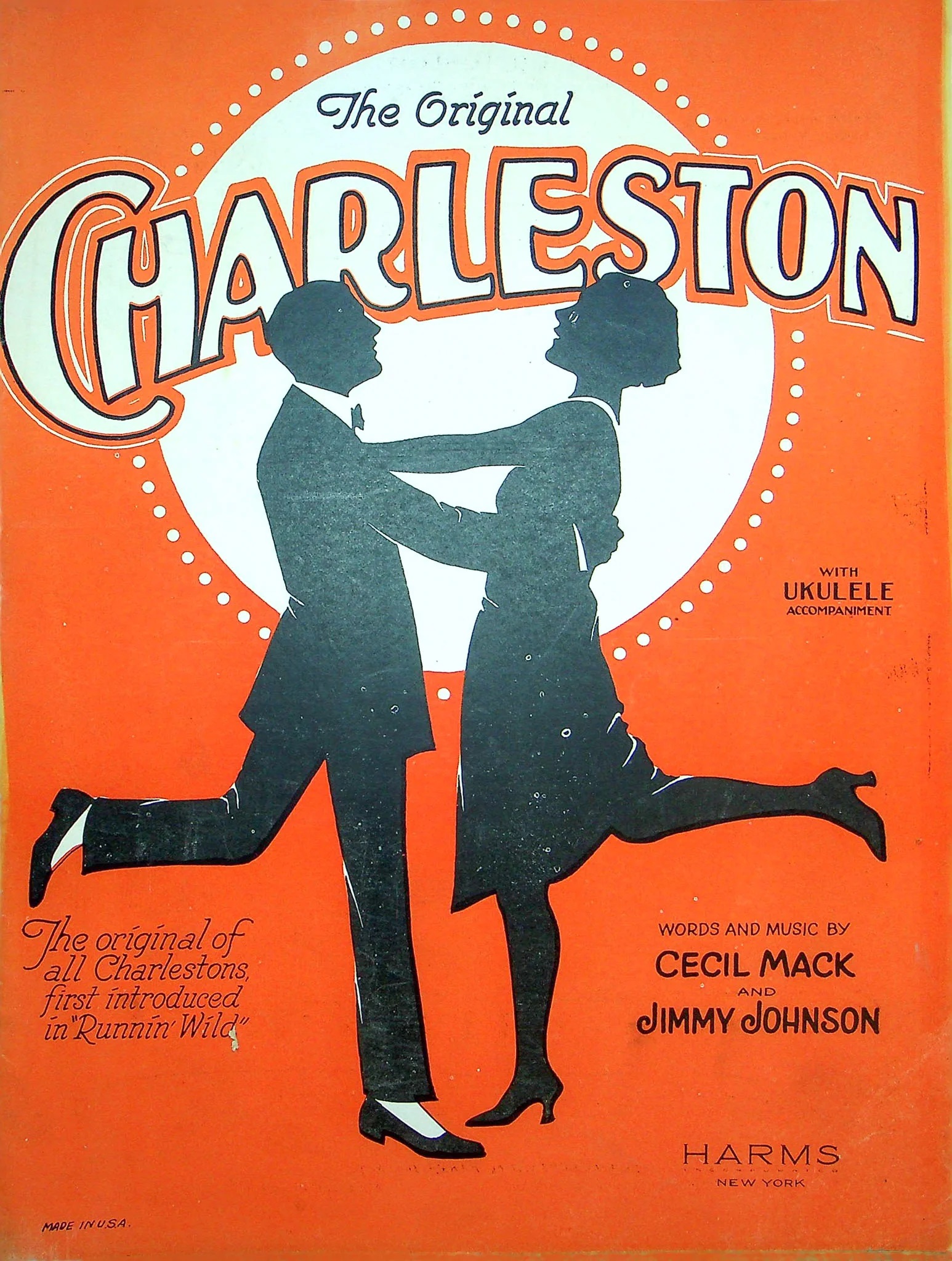The year 2023 marks the centennial of the publication of the “Charleston,” the tune, dance, and rhythm that has come to define the decade of the 1920s. It was written by James P. Johnson for his stage show Runnin’ Wild that opened on Broadway in October, 1923.
Although his was not the first tune to use the city in its name, or the first to incorporate the intoxicating rhythm, it, along with the dance it accompanied, codified a folk tradition that had been working its way through the African American community for decades. It took a little time, but the trifecta of this one tune, rhythm, and dance ignited a world-wide cultural phenomenon unparalleled in popular music history. One hundred years later, no other song and dance represents the “roaring twenties” more so than does the “Charleston.”
The origins of the rhythm and dance can be traced to holdovers of African influences among the slaves of the coastal southeast, especially South Carolina and Georgia. As relatively isolated communities, many of their traditions survived both slavery and assimilation. One of the most important was the ring shout. Initially part of religious ceremonies, it was increasingly secularized after the Civil War. Slowly at first, African Americans began to move from the South up the East Coast, increasing just before World War I as part of the Great Migration.
 James P. Johnson was first exposed to this tradition in New Brunswick where he was born in 1894. His Virginia born mother and step father from Alabama entertained their friends who performed many southern “set” and cotillion dances as well as the ring shout in the family parlor. Young Jimmy watched from the top of the stairs.
James P. Johnson was first exposed to this tradition in New Brunswick where he was born in 1894. His Virginia born mother and step father from Alabama entertained their friends who performed many southern “set” and cotillion dances as well as the ring shout in the family parlor. Young Jimmy watched from the top of the stairs.
When he was a teenager and by then an accomplished pianist, Johnson encountered this same tradition in the rathskellers of Hell’s Kitchen. He commented how he wrote a number of “Charlestons” based on their dance steps and rhythms, and that one became the famous tune. These Gullah and Geechie traditions were brought north not only by the working community, but also artists like the Jenkins Orphanage band, songwriter Chris Smith, dancer Thaddeus Drayton, and others.
Chris Smith included a version of the “Charleston” rhythm in his 1908 tune “You’re in the Right Church but the Wrong Pew.” Drayton, Noble Sissle, and Will Marion Cook recalled seeing the dance around 1900. Once the stifling effects of the First World War, the 1918 flu pandemic, and the recession of 1920 waned, the jazz age was ready to burst open, and Johnson was ready for it. He used this same rich tradition not only in crafting a hit stage tune, but in other musical formats, most notably his stride piano anthem “Carolina Shout,” and his piano rhapsody Yamekraw.
 In 1921, African Americans re-emerged on Broadway after more than a decade in exile with Eubie Blake and Noble Sissle’s groundbreaking stage masterpiece Shuffle Along. With blackface comedians Flournoy Miller and Aubrey Lyles, their show opened the door for other African Americans in America’s most prominent entertainment district.
In 1921, African Americans re-emerged on Broadway after more than a decade in exile with Eubie Blake and Noble Sissle’s groundbreaking stage masterpiece Shuffle Along. With blackface comedians Flournoy Miller and Aubrey Lyles, their show opened the door for other African Americans in America’s most prominent entertainment district.
In 1922, Maceo Pinkard followed with his successful show Liza. He wrote a tune entitled “The Charleston Dance,” but despite the insistence of Maud Russell who performed it that she was the first to introduce the famous dance, there is no evidence this tune or her rendition became broadly popular. The same is true of “Charleston, Cut-Out” and “Charleston Finale,” both of which appeared in the ill-fated show How Come that followed Liza. Since the music is lost, we can’t know whether any of these tunes included the famous rhythm.
However, in February of 1923, cornetist Thomas Morris recorded his “Original Charleston Strut.” It was published by Clarence Williams a few months later, and both the recording and sheet music clearly incorporate the characteristic rhythm. While in the thick of composing for Runnin’ Wild, Johnson’s tune “The Charleston Dance” was copyrighted by Irving Mills in June. A lead sheet exists but it was never published and is not the version he used in Runnin’ Wild. It does include the “Charleston” rhythm in a less obvious construction.
How the dance actually made its way into the show depends on who was asked. Flournoy Miller, and Elida Webb, the choreographer of the dance in the show, both took credit for it. They were no doubt aware of the preceding versions in Liza and How Come, but state in interviews that they came across it on the street corners of Harlem. Runnin’ Wild ran for a respectable 220 performances on Broadway, and then embarked on a cross-country road tour.
The dance took hold slowly at first, but by late 1924 had seemingly become a world-wide sensation overnight. The “Charleston” craze peaked in 1925, and by then everyone was taking credit for it. Ned Wayburn, choreographer for the Ziegfeld Follies, claimed himself as inventor, as did dancer Bee Jackson, producer Lew Leslie, and George White, the producer of Runnin’ Wild and a former Ziegfeld dancer himself.
Will Marion Cook and James Weldon Johnson, however, set the record straight in writing that the famous song and dance emerged from the pen of Johnson and the show Runnin’ Wild. The “Charleston” became both an essential part of the culture for some, and the source of all of society’s ills for others. “Charleston” contests proliferated, and the likes of Ginger Rogers, Joan Crawford, Bee Jackson, Ann Pennington, Ada “Bricktop” Smith, Josephine Baker, Florence Mills as well as George Raft notably started their careers or became internationally known for their “Charleston” dancing. But religious leaders, medical professionals, and some politicians castigated it.
For Johnson, there was some financial reward for sure from composing and mechanical royalties. 150,000 recordings on ten different labels were sold in one quarter during the peak of its popularity, and that during a slump in the recording industry. But he earned far less than other songwriters during that time.
He didn’t help himself by not recording his smash hit with his own orchestra, and for most of the “Charleston” peak, he was out of New York composing for other, now forgotten musical theater productions. He wrote a sequel appropriately entitled “Everybody’s Doin’ the Charleston Now,” which was published by Irving Berlin in 1925, but garnered only modest attention. The “Charleston” craze did eventually wane, and Johnson went on to other great musical successes.
But the “Charleston” had staying power. It was influential in the evolution to the Jitterbug and Lindy Hop. To this day, it remains the most recognized musical and dance symbol of the decade of abandon, but few people know it was written by the “Father of Stride Piano,” James P. Johnson.
Scott E. Brown, MD, MA, is the biographer of James P. Johnson. His first book was published in 1987. He holds a Masters Degree in Jazz History and Research from Rutgers University-Newark, N.J. His Masters thesis on Jaki Byard is available on Google Scholar. Dr.Brown’s new biography of Johnson is expected in 2025.






















